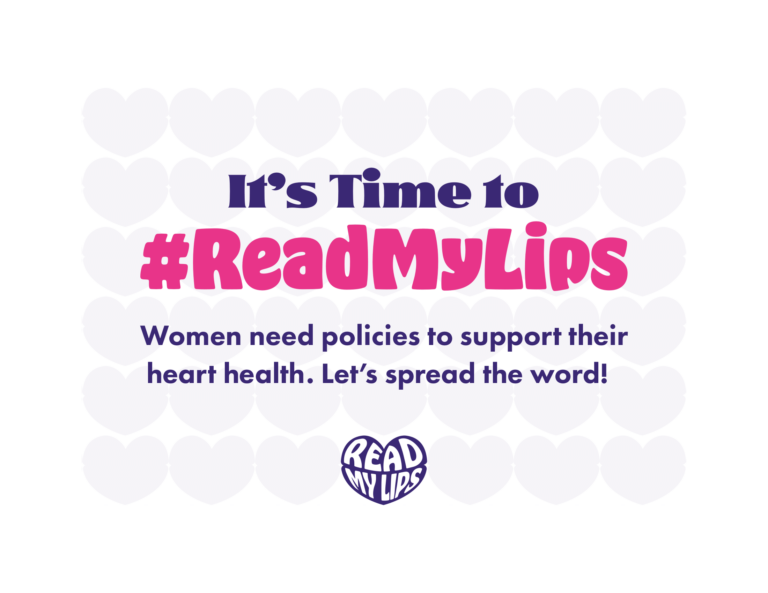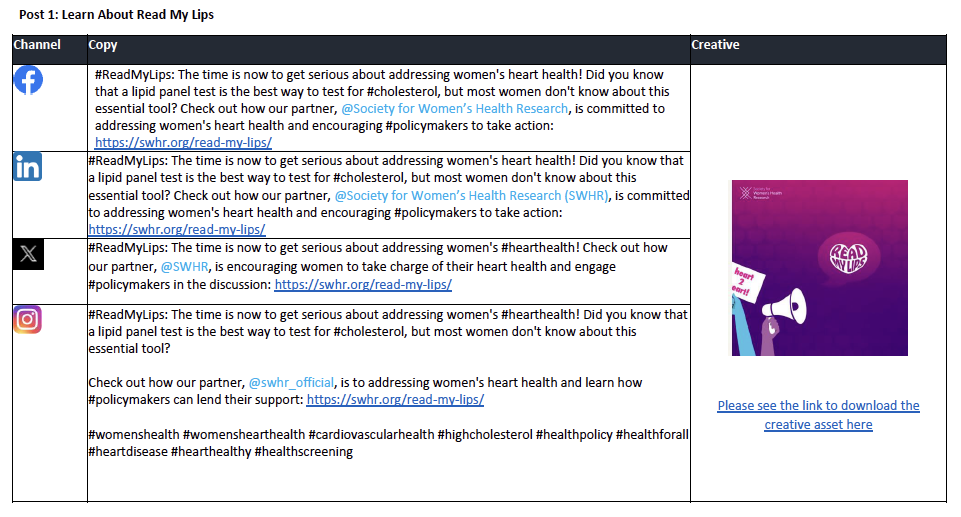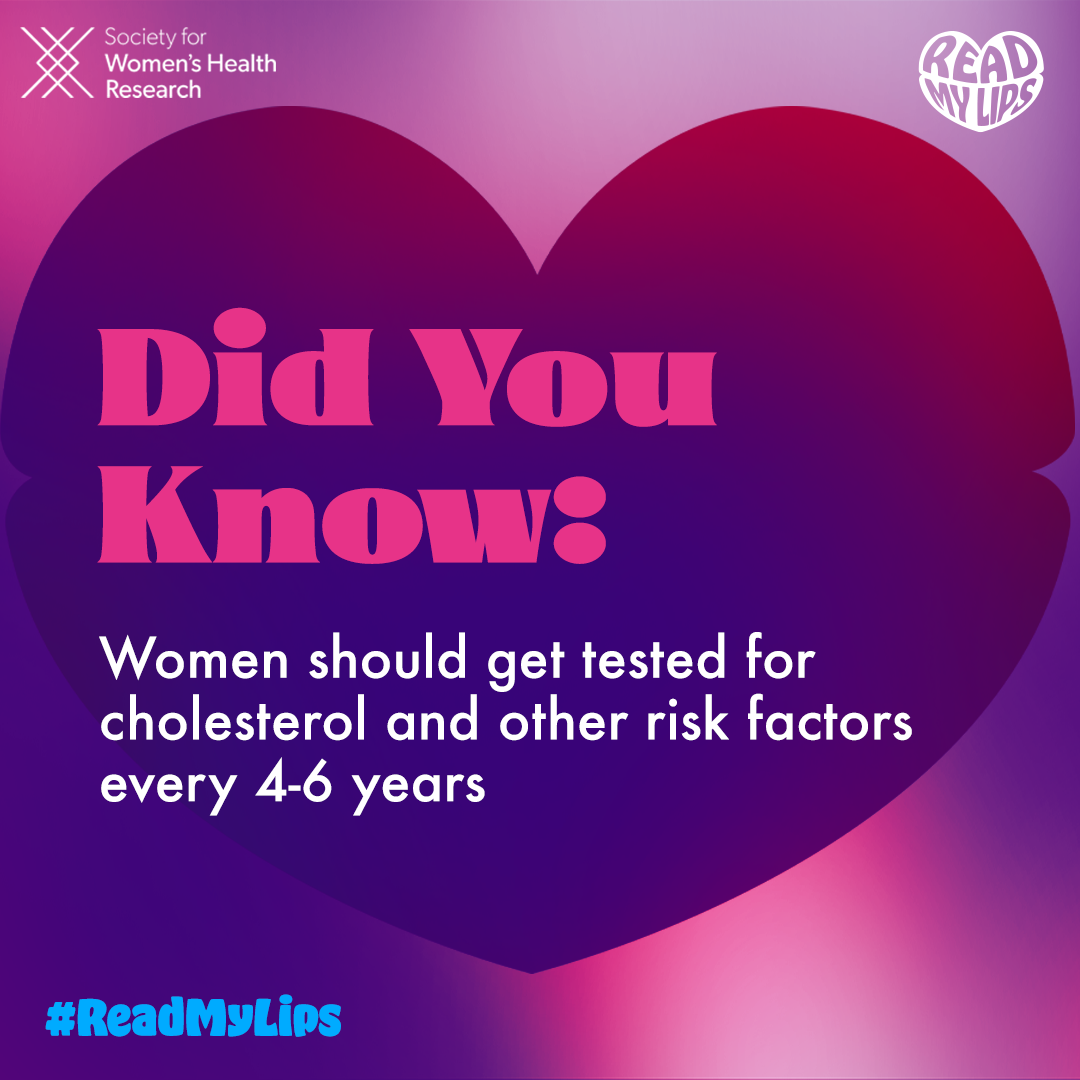This year, will you join us and #ReadMyLips?
Read My Lips – LIPids, that is! Did you know that lipid panel testing is the most comprehensive way to determine high cholesterol?
The Society For Women’s Health Research’s (SWHR) Read My Lips campaign aims to emphasize the importance of women knowing their risk factors for heart disease and understanding and the critical role cholesterol screening – and specifically, lipid panel testing – for women’s heart health.
Policymakers and clinicians alike have important roles to play in improving women’s heart health across the lifespan, by increasing heart health awareness, improving education, and ensuring access to important screenings and lipid panel testing.











